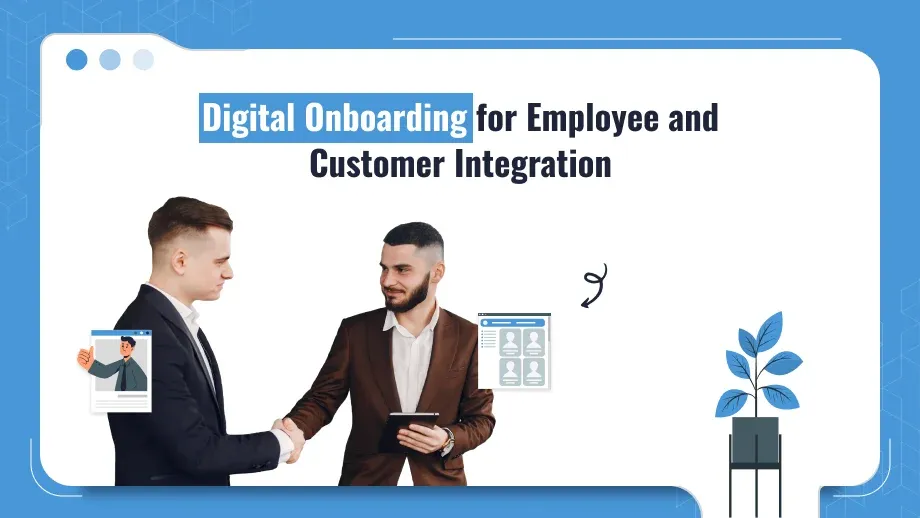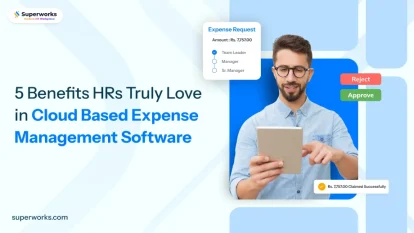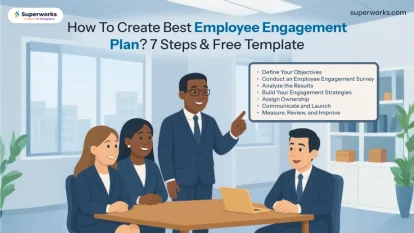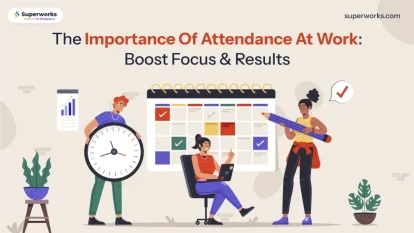
In the context of remote work, online services, and flexibility and scalability, digital onboarding changes the approach by which an organization introduces employees and customers to its systems. This reduces the time it takes for employees and customers to come up to speed, saving time and resources while making onboarding better by automating boring stuff and consistency. This post will cover the benefits, how to, and impact on employee and customer onboarding.
Why Digital Onboarding is the Way Forward
Problems with Traditional Onboarding
Traditional onboarding is very slow and painful, especially for huge companies with a large workforce or a very big customer base. New hires or customers require lots of paperwork and manual entry into computer records; they also require many in-person meetings with people. It means that in such companies, no considerable productivity goes on quickly. It is even more complicated for companies seeking to go global because traditional methods involve so many complications by time zones and the logistics of coordination across regions.
How Digital Customer Onboarding Fixes This
Digital onboarding makes the process easy by automating it; companies can onboard employees and customers from anywhere in the world. With HR software, e-signature tools, and interactive modules, onboarding will not be a hassle anymore. New employees will start contributing sooner and customers can be enabled to use the product or service the moment they join.
For example, digital customer onboarding allows businesses to automate account setup, product tutorials, and support processes, so customers can get comfortable with a product without needing to be held by hand by customer support teams. Similarly, a structured online employee onboarding for employees, organized, means preparing to begin their role without having to go into the office.
What Determines an Online Onboarding Process Success
Companies undertaking online onboarding have to create processes efficient and scalable enough in an adaptive manner. Here are the key components:
Preboarding
Preboarding sets the stage for the official onboarding process. For employees, it can include sending company policies, pre-access to training materials, and introducing them to their teams via digital platforms. For customers, preboarding can involve a sequence of emails or in-app notifications that guide them through account setup or an introduction to the customer onboarding statistics process.
Automation of Administrative
Tasks Automating administrative tasks like contract signing, form filling, and access to digital tools make the onboarding process much smoother. It eliminates human error and allows HR and management teams to focus on providing a more personalized onboarding experience. For customer onboarding automation can be used to trigger step-by-step guides or product tours that help customers understand a product’s functionality without needing constant assistance.
Customized Online Onboarding Paths
Different roles or customer types require different onboarding experiences. Not applicable in today’s vast digital space: One size does not fit all. Companies can tailor onboarding paths so that new hires or clients will only see what is most relevant to them. For example, onboarding for a software developer might focus on introducing specific coding tools, while customer onboarding for an enterprise client onboarding may include more in-depth training and access to premium support.
Digital Solutions and Tools
Using digital solutions like HR software India, learning management systems, and e-signature tools ensures consistency across the onboarding process. These platforms track the onboarding journey, making it easy to ensure compliance and allow for timely interventions if needed. A digital solution can also be scaled, so companies can onboard large numbers of employees or customers with the same level of efficiency.
A better digital onboarding experience leads to 2.6 times higher employee satisfaction.
Improve your digital onboarding process with Superworks!
Using Digital Solutions to Improve Onboarding
Digital HR onboarding platforms are designed to simplify the onboarding process for both employees and customers. These platforms streamline multiple aspects of onboarding such as task assignments, progress tracking, and document management. They also provide interactive tools to engage employees or customers so they are fully equipped and comfortable with the company’s processes and tools.
For example, using a digital solution for customer onboarding, along with proper training and compliance, can reduce churn rates by ensuring customers fully understand and engage with the product. For employees, a digital onboarding system provides structured learning paths so they can get productive faster. These systems provide a consistent repeatable onboarding experience whether you have 10 or 1,000 new users.
Best Practices for Online Onboarding for customer
1. Preboarding for Employees and Customers
Preboarding is an important element of the onboarding process. Make sure new employees or customers receive relevant materials before the official start so they can get familiar with the company’s expectations and culture, reducing anxiety. For employees this might include pre-access to training or intro calls with key team members. For customers, it could be a welcome email sequence that introduces them to key product features.
2. Interactive Learning Tools
Engagement is key to successful onboarding. Include interactive learning tools like quizzes, simulations, or gamified learning modules to increase the effectiveness of the HR onboarding process. For customers product tours and tutorials should include engaging content that allows them to explore the product at their own pace. For employees interactive digital learning tools provide real-time feedback, improving knowledge retention and job readiness.
3. Continuous Support and Feedback
Onboarding does not end once the initial process has been accomplished for an employee or customer. Ongoing support is extremely significant for the successful completion of the onboarding process for the long term. Companies need to ensure accessibility for both employees and customers to support tools, such as FAQs, chatbots, and human support teams so that issues are resolved promptly. Regular check-ins or follow-up surveys can be particularly essential in coming to know areas where improvement is needed in the online onboarding process.
4. Collecting and Enhancing the Process
What digital onboarding platforms do is track how well an employee or customer is doing for a company. By collecting feedback through surveys or data tracking companies can identify pain points or areas that need improvement. The onboarding process continually improves with time due to feedback loops such as these.
Digital Onboarding for Distributed and Hybrid Teams
Customer onboarding processes are more in demand from remote and hybrid teams. In-person meetings cannot be conducted thus digital employee onboarding can only onboard employees digitally in integration of new hires into its culture and ways of doing things. Digital tools help bridge the gap for remote teams so that everyone gets access to everything that is accessible within the organization irrespective of their location.
For remote teams customer onboarding process means setting up Virtual Onboarding meet-and-greet sessions, sharing important documents digitally and ensuring compliance training can be done online. For customers online onboarding is considered the same as gaining access to services as is experienced by individuals in person at service facilities.
Digital Customer Onboarding: Better Experience for Users
Customer onboarding plays a critical role in any business dealing with the sales of products or services. A digital customer onboarding process that is run smoothly and effectively can mean the difference between a customer staying for the long haul and one who churns after two weeks. Here are some ways through which businesses could improve customer onboarding processes using digital solutions:
Frictionless Onboarding
A digitally well-designed customer onboarding process takes away some of the friction that causes customers to drop off. That is to say, make it easy for customers to go through the setup process with explicit instructions and convenient availability of support. Automated email sequences, in-app notifications or real-time onboarding assistants can help customers get set up and started with the product asap.
Real-Time Assistance and Support
Providing real-time support translates into a situation where a customer never feels stuck at any stage of the onboarding process. In the form of chatbots, live chat, or video tutorials that give a customer fast access to help when needed, it fosters trust and enhances the onboarding experience.
Seamless Handoff from Sales to Support
The transition from sales to onboarding should be frictionless for a customer. Ensuring that all customer information is properly passed on from one team to another is key to maintaining a relationship with the customer and proving to the customer that the company is organized and prepared to serve the customer. More so for complicated products that require more constant communication with the customer at the initial stages of a customer relationship.
Metrics for Measuring Digital Onboarding Success
Measuring your digital online onboarding is key to continuous improvement. KPIs include:
- Time to onboard: How long it takes employees or customers to complete their onboarding process.
- Onboarding completion rate: The percentage of users who finish the onboarding process.
- Engagement: How long do employees or customers spend on onboarding materials?
- Retention: Long-term retention of employees or customers who have completed onboarding.
- Onboarding satisfaction: Feedback from employees and customers on onboarding.
Companies can measure these metrics to improve their digital onboarding systems, meeting the needs of new hires and customers.
Conclusion
Digital onboarding is not a trend; it is a business necessity of today. Efficient digital onboarding is paired with faster integration, higher satisfaction, and greater retention for new employees or customers. To serve up a seamless onboarding experience that guarantees success for employees and customers alike, you can rely on automation, personalized onboarding paths, and continuous support. The incorporation of HRMS Payroll Software in India makes such an experience smooth by streamlining the backend administrative work and ensuring that the newly appointed individual feels appreciated from day one.






